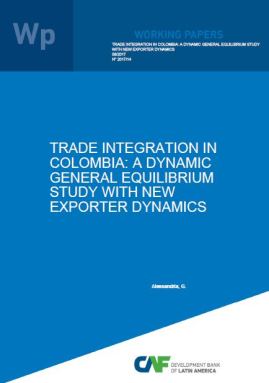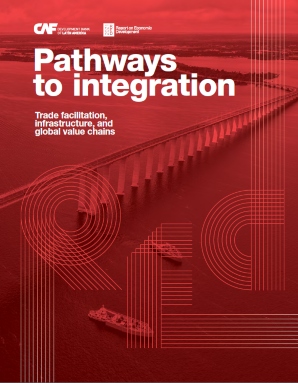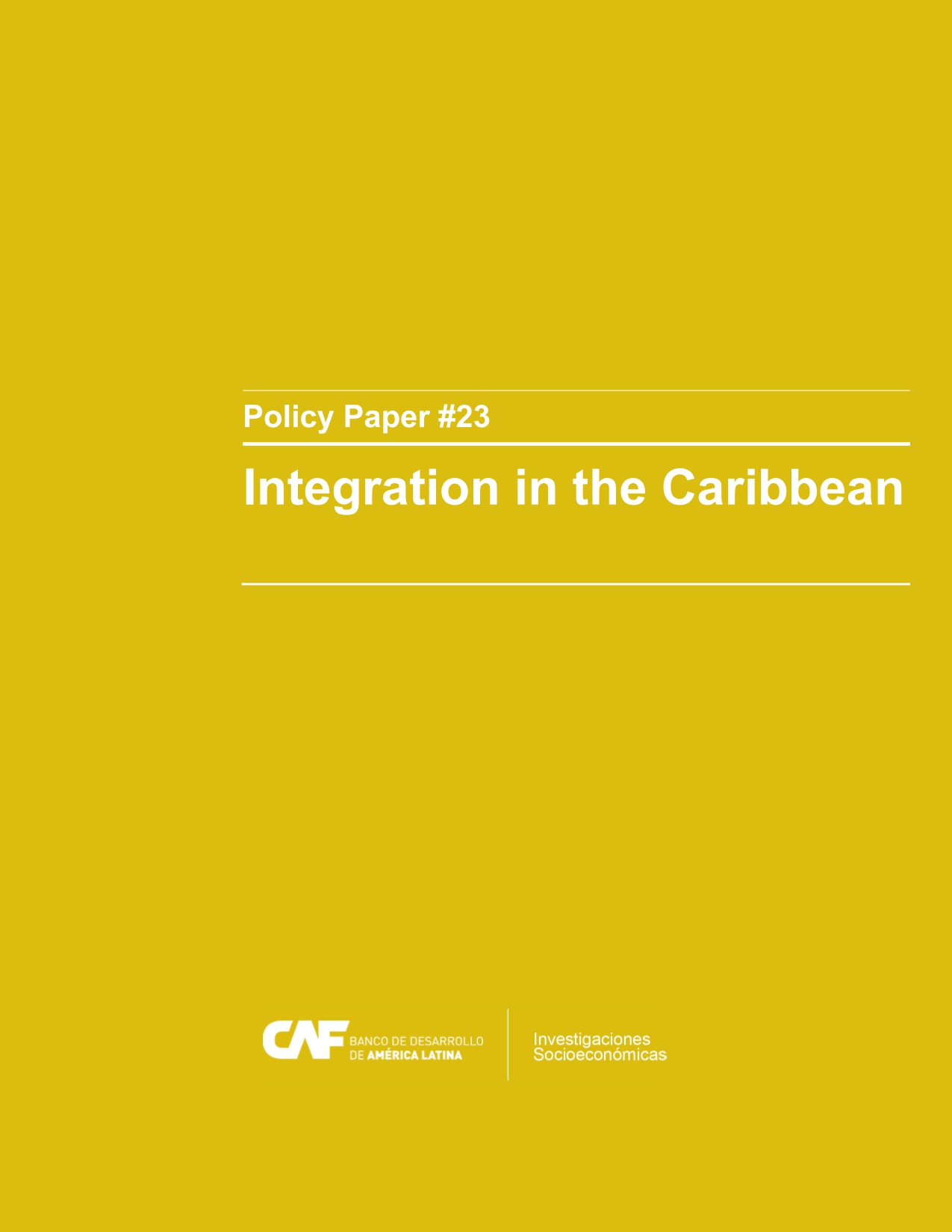Mostrar el registro sencillo del ítem
Trade Integration in Colombia: A Dynamic General Equilibrium Study with New Exporter Dynamics
| dc.contributor.author | Alessandria, George | |
| dc.contributor.author | Avila, Oscar | |
| dc.coverage.spatial | Colombia | es_ES |
| dc.date.accessioned | 2017-10-19T14:13:47Z | |
| dc.date.available | 2017-10-19T14:13:47Z | |
| dc.date.issued | 2017-08-01 | |
| dc.identifier.citation | Alessandria, G., & Avila, O. (2017, August 1). Trade Integration in Colombia: A Dynamic General Equilibrium Study with New Exporter Dynamics. CAF – Working paper;N° 2017/14, Buenos Aires: CAF. Retrieved from https://scioteca.caf.com/handle/123456789/1101 | en_GB |
| dc.identifier.uri | https://scioteca.caf.com/handle/123456789/1101 | |
| dc.description.tableofcontents | We study Colombia’s trade integration over a 30 year period through the lens of GE model in which non-exporters have access to a risky exporting technology and exporters must invest in accumulating a better exporting technology. Our model is calibrated to match the producer and exporter lifecycles and yields a novel estimate of the various costs of exporting. We find the upfront costs of starting to export are much lower than in previous analyses but that this technology is quite risky in that most firms that incur the cost do not end up with an export opportunity. We also find that for existing exporters, expanding exports requires sustained export-specific investments. We then examine the transition following Colombia’s 89-91 trade reform. We show that the relationship between the firm-level export intensity and aggregate export intensity disciplines the changes in technology and policy accounting for this integration. We find that a common decline in tariffs can account for about 75 percent of the growth in exports as a share of manufacturing sales. We attribute the remaining 25 percent to an increase in the success of investments in export market access. About 10 percent of the increase in trade is accounted for by the endogenous accumulation of an improved exporting technology by existing exporters. These changes in policy and exporting technology boost welfare by about 7.1 percent. The transition following the reforms is characterized by an overshooting of output and consumption, with consumption peaking 15 years after the policy. Further tariff reductions are expected to increase welfare another 6.2 percent. | es_ES |
| dc.language.iso | en_US | es_ES |
| dc.publisher | CAF | es_ES |
| dc.relation.ispartofseries | CAF – Working paper;N° 2017/14 | |
| dc.rights | CC-BY-NC | es_ES |
| dc.rights.uri | http://creativecommons.org/licenses/by-nc/4.0/ | es_ES |
| dc.subject | Comercio internacional | es_ES |
| dc.subject | Economía | es_ES |
| dc.subject | Investigación socioeconómica | es_ES |
| dc.subject | Productividad | es_ES |
| dc.subject | Sector privado | es_ES |
| dc.subject | Sector productivo | es_ES |
| dc.title | Trade Integration in Colombia: A Dynamic General Equilibrium Study with New Exporter Dynamics | es_ES |
| dc.type | workingPaper | es_ES |
| dc.publisher.city | Buenos Aires | es_ES |
Ficheros en el ítem
Este ítem aparece en la(s) siguiente(s) colección(ones)
-
6.1 Documentos de trabajo en investigación socioeconómica
En esta colección se encuentran los documentos de trabajo sobre temas económicos y sociales prioritarios para la región.






